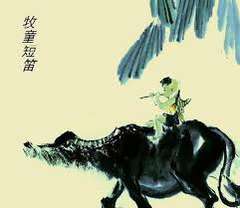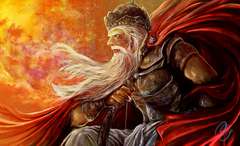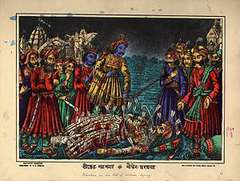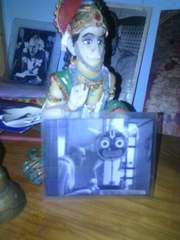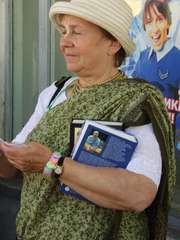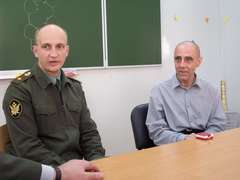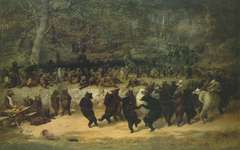Hare Krishna dear Gurudeva
I'm sending you the NIMSAR quarterly report delivered to the National Board secretary last week. We are waiting for your comments and suggestions.
NIMSAR QUARTERLY REPORT N°002
OCTOBER 3rd 2014
Dear members of the National Board
Receive, please, our humble obeisances.
All glories to Srila Prabhupada!
Hoping you are well of spiritual and physical health, we greet you warmly and present our quarterly report as promised.
1.COMMUNICATIONS
As suggestion of our senior counselor, His Holiness Hanumatpresaka Swami, communications has to flow through the secretaries, as in any formal institution. Therefore, the communication will be provided by Bhakta Germán, of course, with the consent of the NIMSAR board and its president.
We reiterate our concern for not receiving formal responses to our two previous communications, "Introductory NIMSAR’s letter to the National Board “and "NIMSAR Quarterly Report No. 001." We understand that you are people with many responsibilities, but we need an answer to know if we are proceeding properly and what can we do to improve our service. Also, we will appreciate receiving your suggestions and contributions to assist with the growth of ISKCON in the educational aspect.
2.BOARD
Our Board was confirmed for the period August 2014 to August 2015. The members are:
Laksmana-agraja: President
Bhakta Germán: Secretary
Isvari devi dasi: Treasurer
3.PROGRAMS
We continue to develop Bhakti-sastri and Bhakti-vaibhava courses, the Introduction to Bhakti yoga pilot program with the same management until the end of the year. Similarly, the continued the implementation of the Goloka Education Sanskrit course to make it available to everybody from next year.
Internally we are working Institutional topics like: elaboration on our Vision and Mission, as well as Values and Objectives, Regulations and User Manual documents. We are also working in communication strategies and development of various media such as Facebook, blog, etc. that we will be launching by the end of november.
4.PAST EVENTS
NIMSAR took part of the North American ISKCON Symposium on Education in July, growing their perspectives, and also organized a Discussion of Education in august with Mahavidya dd, Minister of Education in ISKCON Germany, with participation of Bhadrarupa Prabhu, Ph.D. student in education. In this discussion group we received the European experience in Education and studied the GBC document on Srila Prabhupada's position in ISKCON.
These two events have inspired us for us to host future events that we will describe later.
In these days we have organized a couple of talks with Hanuman Prabhu, form the BBT. One at the Wilson temple about"Leadership in Education" and another in Chosica, entitled "Challenges of sankirtan and preaching in today’s world." Both events especially aimed to leaders, preachers and educators in ISKCON.
- FUTURE EVENTS
NIMSAR is organizing and participating in various national and international events that will be successful only with the consent, support and blessing of the National Board.
I. Conference on Position of Srila Prabhupada, Founder-Acharya of ISKCON. Speaker: Karuna Krishna Prabhu. To be held on October 25 at the Temple of Wilson.
II. ISKCON Education Congress in Peru. To be held on November 23 at the Temple of Chosica. Several speakers: P. Laksmana-agraja, P. Patraka, P. Abhinanda. We will also make a formal invitation to have the valuable experience of Karuna P. Krishna, P. Omkara, P. Jiva shakti in Education.
III. Education Congress in Bolivia. To be held on 3 and 4 January 2015 with the participation of SS Hanumatpresaka Swami.
IV. Regional Congress of Education: Argentina, Chile, Bolivia, Peru, Ecuador, taking place between the last week of January and the first week of February 2015, with the participation of SS Hanumatpresaka Swami and various regional leaders in the educational field as Param Padam Prabhu, etc. NIMSAR has already agreed a space of 40 minutes to make its presentation.
V. We will have the visit from HH Bhaktibhusana Swami Maharaja and SS Prahladananda Swmai Maharaja so we are arranging educational programas with then through their disciples. We also have a pending conference with P. Bhadrarupa, a doctoral student in education at the University of Geneva on Teacher Training to be held in December this year. We may have a visit from Ramgiridhari Prabhu, Chairman of the Executive Committee of the Ministry of Education and Founder of ISKCON Goloka Education in Houston. We are coordinating with him the implementation of the Sanskrit course. Prabhu would step in Lima and we could make a program with him before accompany him to Chile for the Regional Education Congress.
Finally, we reiterate our commitment to education in ISKCON Peru and the region under the Seven Purposes that Srila Prabhupada established.
Waiting for your prompt response,
your servants
NIMSAR
REPORTE TRIMESTRAL DE NIMSAR N°002
3 DE OCTUBRE 2014
Estimados miembros de la Junta Nacional del yatra de Perú.
Reciban, por favor, nuestras humildes reverencias.
¡Todas las glorias a Srila Prabhupada!
Esperando que se encuentre bien de salud espiritual y corporal, los saludamos cordialmente y le presentamos nuestro reporte trimestral tal como lo prometimos.
1.COMUNICACIONES
Por sugerencia de nuestro principal consejero, Su Santidad Hanumatpresaka Swami, la comunicación tiene que fluir a través de las secretarías como en cualquier institución formal. Por lo tanto, la comunicación estará a cargo de Bhakta Germán, por supuesto, con la anuencia del directorio de NIMSAR y su presidente.
Reiteramos nuestra preocupación por no recibir respuestas formales a nuestras dos anteriores comunicaciones: “Carta de presentación de NIMSAR a la Junta Nacional” y “Reporte Trimestral de NIMSAR N°001”. Entendemos que ustedes son personas con muchas responsabilidades, sin embargo necesitamos una respuesta para saber si estamos procediendo adecuadamente, y qué debemos hacer para mejorar nuestro servicio. También apreciaríamos mucho recibir sus sugerencias y aportes para colaborar con el crecimiento de ISKCON en el aspecto educativo.
2.LA JUNTA DIRECTIVA
Nuestra Junta Directiva se corroboró para el periodo de agosto del 2014 a agosto del 2015. Sus integrantes son:
Laksmana-agraja: Presidente
Bhakta Germán: Secretario
Isvari devi dasi: Tesorera.
3.PROGRAMAS
Seguimos desarrollando los cursos de Bhakti sastri y Bhakti vaibhava, el programa piloto de Introducción al Bhakti- yoga con la misma administración hasta finales de año. De igual manera, continua la implementación del curso de sánscrito con Goloka Education para que esté a disposición del público a partir del próximo año.
Internamente estamos trabajando temas Institucionales como: La elaboración detallada sobre nuestra Visión y Misión. Valores y Objetivos. Reglamento Interno, Manual de Funciones. También las estrategias de Comunicación y desarrollo de los distintos medios como Facebook, blog, etc. que prontamente estaremos lanzando.
4.EVENTOS PASADOS
NIMSAR participó del Simposio Norteamericano de Educación en ISKCON en el mes de Julio, enriqueciendo sus perspectivas, y también organizó un Conversatorio de Educación en agosto con M. Mahavidya, Ministra de Educación de ISKCON Alemania y la participación de Bhadrarupa Prabhu, estudiante de Doctorado en Educación. En este conversatorio recibimos la experiencia europea en Educación y estudiamos el documento del GBC sobre la posición de Srila Prabhupada en ISKCON.
Estos dos eventos nos han inspirado para nosotros organizar eventos futuros que describimos después.
En estos días también se está realizando dos conversatorios con Hanuman Prabhu del BBT. Uno en el templo de Wilson “Liderazgo en la Educación”, y otro en Chosica “Retos de la prédica y el sankirtan en el mundo actual”. Ambos eventos dirigidos especialmente a líderes, predicadores y educadores de ISKCON
5.EVENTOS FUTUROS
NIMSAR está organizando y participando en varios eventos nacionales e internacionales que sólo serán exitosos con la anuencia, el apoyo y la bendición de la Junta Nacional.
I.Conferencia sobre la Posición de Srila Prabhupada, Fundador-Acharya de ISKCON. Expositor: Prabhu Karuna Krishna. A realizarse el 25 de Octubre en el Templo de Wilson.
II.Congreso de Educación en ISKCON Perú. A realizarse el 23 de Noviembre en el Templo de Chosica. Varios expositores: P. Laksmana-agraja, P. Patraka, P. Abhinanda. También haremos la invitación formal para contar con la valiosa experiencia de P. Karuna Krishna, P. Omkara, P. Jiva sakti en el campo educativo.
III.Congreso de Educación en Bolivia. A realizarse el 3 y 4 de Enero del 2015 con la participación de SS Hanumat presaka Swami.
IV.Congreso de Educación de la Región: Argentina, Chile, Bolivia, Perú, Ecuador. A realizarse entre la última semana de Enero y la primera semana de Febrero del 2015.Con la participación de SS Hanumatpresaka Swami y diversos líderes regionales en el campo educativo, como Param Padam Prabhu, etc. NIMSAR tiene ya pactado un espacio de 40 minutos para hacer su presentación.
V.También queremos aprovechar la visita de SS Prahladananda Maharaja y SS Bhaktibhusana Maharaja para realizar programas con ellos. También tenemos una conferencia pendiente con P. Bhadrarupa, estudiante de doctorado en educación de la Universidad de Ginebra, sobre Entrenamiento de Profesores que se realizaría en Diciembre de este año. Posiblemente tengamos la visita de Ramgiridhari Prabhu, Presidente del Comité Ejecutivo del Ministerio de Educación de ISKCON y Fundador de Goloka Education en Houston. Con él estamos coordinando la implementación del curso de Sánscrito. Prabhu estaría de paso por Lima y podríamos aprovechar para hacer algún programa con él, antes de acompañarlo a Chile para el Congreso regional de Educación.
Finalmente, reiteramos nuestro compromiso con la Educación en ISKCON Perú y la región, bajo sus Siete Propósitos que estableció Srila Prabhupada.
Esperando su pronta respuesta, se despiden sus sirvientes,
NIMSAR
Your servant
Bhakta Germán
NIMSAR secretary
HpS - ASA - Chop Itty Chip! Very nice presentation. Nothing can stop the Sankirtan movement. Just go forward, forward, forward. I think the direction of NIMSAR is good. It is the only formal group for education that I know of in South or Latin America. Spain has Cologio Bhaktivedanta. The life of NIMSAR comes from hearing Srila Prabhupada through his books through the lips of other devotees and our own personal preaching and japa of his books; and especially by chanting Krsna's Names as Srila Prabhupada, Lord Caitanya, recomends.
Hare Krsna, Hare Krsna.... ... . . Then we will see pastimes that we never read in any of Srila Prabhupada's books.
